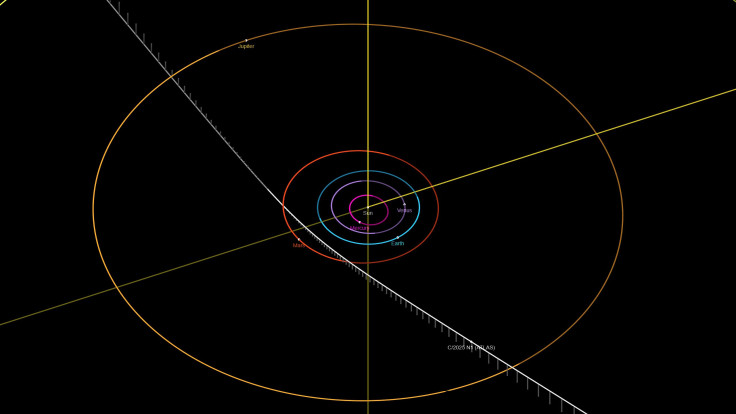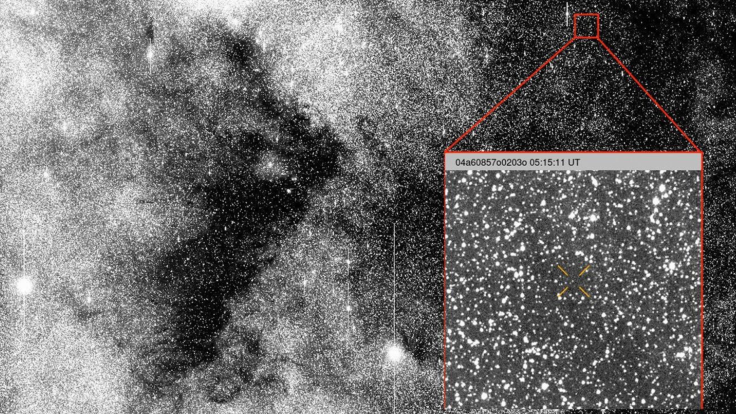3I/ATLAS Update: Michio Kaku Slams NASA for Hiding 'Artificial' Evidence
Dr. Michio Kaku slams NASA for 'unnecessary secrecy' over the bizarre interstellar object 3I/ATLAS, fuelling speculation that it could be artificial.

Our solar system has a new visitor, but it is not behaving as expected. The interstellar object, designated 3I/ATLAS, has sparked intense speculation and now, significant controversy.
First detected on 1 July 2025 by the Asteroid Terrestrial-impact Last Alert System, the '3I' designation confirms it is only the third such interstellar object ever identified.
After passing close to the Sun, new data shows it has lost its tail, a behaviour almost unheard of for a natural comet. This strange anomaly has observers asking questions, but according to famed physicist Dr. Michio Kaku, NASA is holding back the answers.

Dr Kaku Criticises Nasa Over 3I/ATLAS Secrecy
Dr. Michio Kaku, a renowned theoretical physicist and author, has publicly criticised the US space agency for what he describes as a lack of transparency. The controversy centres on the latest images of 3I/ATLAS, which Kaku alleges are being 'hidden from the public.'
In a sharp rebuke, he stated: 'This isn't something that needs to be classified.'
The accusation from such a high-profile figure has amplified existing concerns, suggesting that data crucial to understanding the object's origin and nature is being deliberately withheld.
This alleged secrecy is leaving the public and independent researchers in the dark, forced to speculate about an object that could redefine our understanding of the cosmos.

The Puzzling Data Behind Interstellar Object 3I/ATLAS
The call for transparency is fuelled by the object's deeply strange physical and chemical properties. Its behaviour alone is baffling; shedding its tail post-perihelion (its closest approach to the Sun) is not a standard feature for a natural comet, raising immediate red flags among astronomers.
Furthermore, Dr. Kaku pointed to data estimating the object's age at 7 billion years.
This would make it significantly older than our entire solar system, which formed around 4.6 billion years ago. Adding to the mystery is its 'unusually high nickel content.' This composition, Kaku claimed, suggests 3I/ATLAS may be constructed from materials 'far older and tougher' than anything originating from our own solar neighbourhood.
The combination of its advanced age, unusual metallic content, and bizarre interaction with the Sun has led to one explosive, albeit speculative, question.

Could 3I/ATLAS Be Artificial?
The speculation, once confined to science-fiction, is now being openly discussed. Could 3I/ATLAS be artificial? While Dr. Kaku himself admitted that an 'extraterrestrial origin remains highly unlikely', he pointedly noted that others are not dismissing it. He highlighted that Harvard's Dr. Avi Loeb, famous for his propulsion theories and his analysis of the previous interstellar visitor 'Oumuamua, 'hasn't ruled it out completely.'
The suggestion that 3I/ATLAS could be a probe, a piece of defunct technology, or something else entirely, remains a tantalising, if remote, possibility. Without access to the latest images, it is impossible for independent scientists to challenge or verify the hypothesis.
NASA's Alleged 'Unnecessary Secrecy' Fuels 3I/ATLAS Theories
Dr. Kaku's criticism was not limited to this single object. He also admonished NASA for delaying Mars Reconnaissance Orbiter images from October 2, issuing a stark warning that 'unnecessary secrecy only fuels conspiracy theories.'
This broader pattern of alleged information control, in Kaku's view, damages public trust and invites wild speculation precisely when clear data is needed most.
Whatever 3I/ATLAS truly is, whether a natural anomaly from an ancient star system or something more profound, its presence is challenging our understanding. As it rewrites what we thought we knew about interstellar visitors, the mystery is only deepened by the silence from the very agency tasked with exploring the stars.
The true nature of 3I/ATLAS remains a profound mystery, caught between scientific curiosity and accusations of secrecy. Whether it is a natural relic from an ancient star system or something else entirely, the questions surrounding it are only growing.
With high-profile figures like Dr. Kaku demanding transparency, the public is left to wonder: is the truth simply unknown, or is it being hidden?
© Copyright IBTimes 2025. All rights reserved.





















